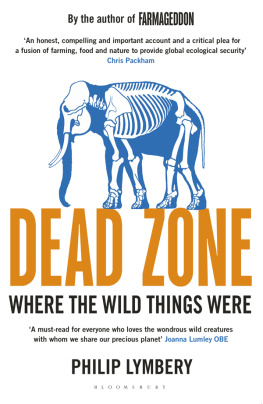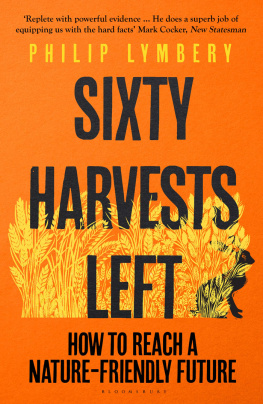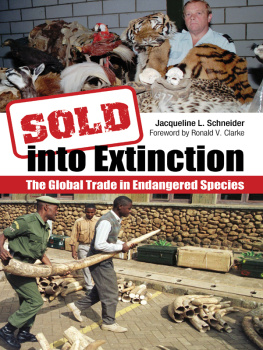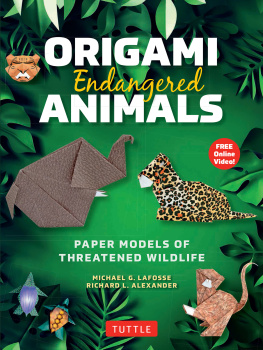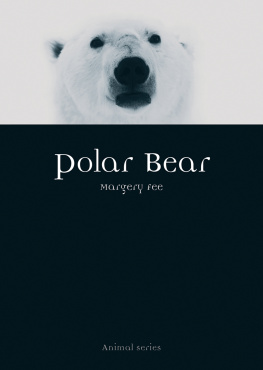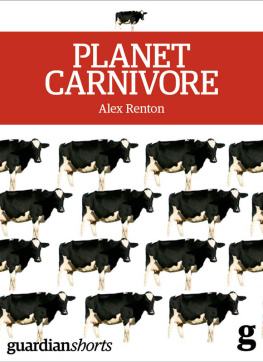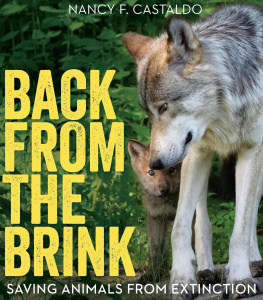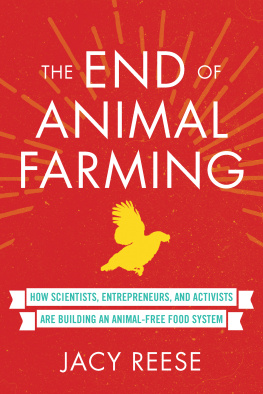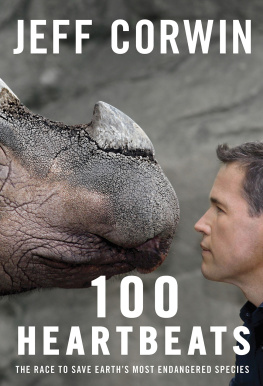DEAD ZONE
To my parents, Reverend Peter and Evelyn Lymbery, with heartfelt gratitude
BY THE SAME AUTHOR
Farmageddon (with Isabel Oakeshott)
DEAD ZONE
Where the Wild Things Were
Philip Lymbery

Contents
First and foremost I owe a huge debt of thanks to Isabel Oakeshott for editing the manuscript and for being my literary inspiration. I have learned so much from you and am hugely grateful for how you helped shape my writing style, as well as your pin-sharp eye for improving the text.
I am indebted to Jacky Turner for the many hours of painstaking research that form the backbone of this book. I couldnt have done it without you and offer my sincere gratitude.
Thank you to Tina Clark, my long-suffering assistant, for all the hard work that went into making the field trips come together and for endlessly reading over my words, making right those important details.
To Carol McKenna for huge support throughout what turned into a mammoth project.
To Katie Milward, my cameraperson on the various adventures to Brazil, Sumatra and the USA, and to everyone who came out on the road with me: Leah Garcs, Federica di Leonardo, Dendy Montgomery, Krzysztof Mularczyk, Annamaria Pisapia and Louise van der Merwe.
To Andrew Wasley and Luke Starr at Ecostorm for putting together field trips, arranging interviews and additional research, as well as Jim Wickens, whose early ideas gave me the confidence to make this book happen.
To my commissioning editors at Bloomsbury: Michael Fishwick, Nick Humphrey and Bill Swainson, to my copy editor, Steve Cox, and to my literary agent, Robin Jones, for support and encouragement.
Huge appreciation to all the trustees of Compassion in World Farming for their sponsorship and support for the book, and for having the vision to see so clearly the connections between factory farming and damage to wildlife and human society too: Teddy Bourne, Jeremy Hayward, Valerie James, Mahi Klosterhalfen, Rosemary Marshall, Sarah Petrini, Reverend Professor Michael Reiss, Michel Vandenbosch and Sir David Madden. To Sir David, particular thanks for being my literary mentor and sounding board.
Grateful thanks to all who commented on drafts and provided such helpful feedback Carolina Galvani, Graham Harvey, John Meadley, Ren Olivieri, David Ramsden (Barn Owl Trust), Graham Roberts (Hampshire and Isle of Wight Wildlife Trust), Richard Brooks, Joyce DSilva, Tracey Jones, Daphne Rieder, Peter Stevenson and Angela Wright.
To Joanna Blythman, Charlie Clutterbuck, Tim Lang, Debbie Tann at the Hampshire and Isle of Wight Wildlife Trust and Duncan Williamson at WWF UK for conversations that shaped ideas.
Finally, huge thanks to my wonderful wife, Helen, for believing in me and for unstinting support this book truly would not have been possible without it.
September in the South Pacific and a life-or-death competition is about to get under way. Nervous youths wait for the cue to throw themselves headlong into the ocean off Easter Island. In the next few moments, they will risk drowning, being eaten by sharks or falling to their deaths in a ritual that every year claims young lives. Before them are small, near-inaccessible islets teeming with seabirds returning to nest. Somewhere on those rocky outcrops, more than a mile across treacherous seas, lies the prize.
A crowd gathers on the headland, and in a flash the young men are off, slipping down a hazardous cliff-face before plunging into foaming water in the ultimate struggle for supremacy. Clutching simple rafts made from reeds, they battle through the surf until, gasping for breath, they reach the islets. They clamber up slippery rocks, distant cheers from the crowd drowned out by screeching seabirds.
It may take days to find what they are looking for, the first sooty tern egg of the year, and the search is only half the battle: the potential winner is not the young man who first captures an egg, but the one who is first to return it safely to shore.
A sudden cry goes up: a potential victor has emerged. Tucking the egg into his headband, the triumphant youth slips back into the sea, swimming carefully this time to avoid dislodging his precious cargo. Back at last on terra firma, he faces the final stretch of his gruelling ordeal a perilous climb up a thousand-foot cliff. After a
On this isolated island around 1760, winning the egg race would bring great kudos to the youth and his sponsoring chief. The egg was regarded by Easter Islands inhabitants as a powerful symbol of the renewal of fertility when fresh food became available once more.
For the coming months, the winning chief would be treated like a deity, his every need tended by a servant. Following ancient tradition, he would stop cutting his hair or nails, which grew to an extraordinary length. He became the representative on Earth of Makemake, the creator god of fertility.
These striking stone statues with their elongated facial features have since become recognised throughout the world as the symbol of the civilisation that was Easter Islands. One of the remotest places on Earth, its rise and fall is one of the most fascinating stories in human history, and a vivid illustration of what happens when delicate ecosystems are upset by deforestation and rapacious farming.
The monuments took great strength and skill to create, the tallest standing as high as 30 ft and weighing 82 tons. Made from volcanic rock, they were probably heaved on rollers or dragged from the quarries by large teams of people. That the ancient islanders had the energy, ability and resources to create something so impressive suggests that they were relatively sophisticated people, and yet they exploited their natural environment so recklessly that after a while it could no longer support them and led to decline. Their fate gives an ominous glimpse of what might happen to us.
The island lies some 2,500 miles off the coast of Chile, and its nearest neighbour, Pitcairn, is some 1,300 miles away. The first settlers were probably Polynesian navigators who made the voyage by around ad 1200 in nothing more capacious than an ocean-going canoe. For these adventurers, it must have been the ultimate
Many centuries before satellite navigation systems, they would have sailed for weeks before zeroing in on this isolated rocky triangle measuring 14 miles long by 7 miles wide.
These early settlers were part of an extraordinary culture that flourished for centuries before going bust. They ate plenty of fish, which they caught using canoes made from hollowed-out tree trunks, and this seems to have worked well. As the population grew, however, so they felled the forests that once covered the island to make way for fields. They grew crops to boost their diet, but when the last of the trees disappeared, so too did their means of fishing. They were left marooned and impoverished.
Nonetheless the population continued to grow, until it outstripped the lands capacity to provide enough food. War broke out between rival clans. By 1774, when Captain Cook arrived, the islanders were poverty-stricken, at each others throats, and down to a fraction of their peak number. They may well have asked if the gods had betrayed them or whether they had betrayed themselves.
Other ancient civilisations, among them the Maya of Central America and the Greenland Norse, have undergone a similar rise and fall. Often their troubles were triggered by the heedless destruction of resources on which their societies depended. Now we may face something similar. As global population pressure stretches the worlds natural resources, the parallels are unnerving.
Life on Earth has thrived for billions of years. Wonderfully diverse civilisations have evolved, powered by an abundance of natural riches. The world is now home to more than 7 billion people and a multitude of different plants and animals, all with their part to play in the complex web of life.
Next page
